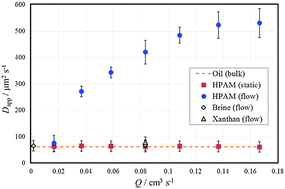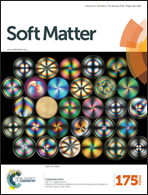Viscoelastic polymer flows and elastic turbulence in three-dimensional porous structures
Abstract
Viscoelastic polymer solutions flowing through reservoir rocks have been found to improve oil displacement efficiency when the aqueous-phase shear-rate exceeds a critical value. A possible mechanism for this enhanced recovery is elastic turbulence that causes breakup and mobilization of trapped oil ganglia. Here, we apply nuclear magnetic resonance (NMR) pulsed field gradient (PFG) diffusion measurements in a novel way to detect increased motion of disconnected oil ganglia. The data are acquired directly from a three-dimensional (3D) opaque porous structure (sandstone) when viscoelastic fluctuations are expected to be present in the continuous phase. The measured increase in motion of trapped ganglia provides unequivocal evidence of fluctuations in the flowing phase in a fully complex 3D system. This work provides direct evidence of elastic turbulence in a realistic reservoir rock – a measurement that cannot be readily achieved by conventional laboratory methods. We support the NMR data with optical microscopy studies of fluctuating ganglia in simple two-dimensional (2D) microfluidic networks, with consistent apparent rheological behaviour of the aqueous phase, to provide conclusive evidence of elastic turbulence in the 3D structure and hence validate the proposed flow-fluctuation mechanism for enhanced oil recovery.



 Please wait while we load your content...
Please wait while we load your content...